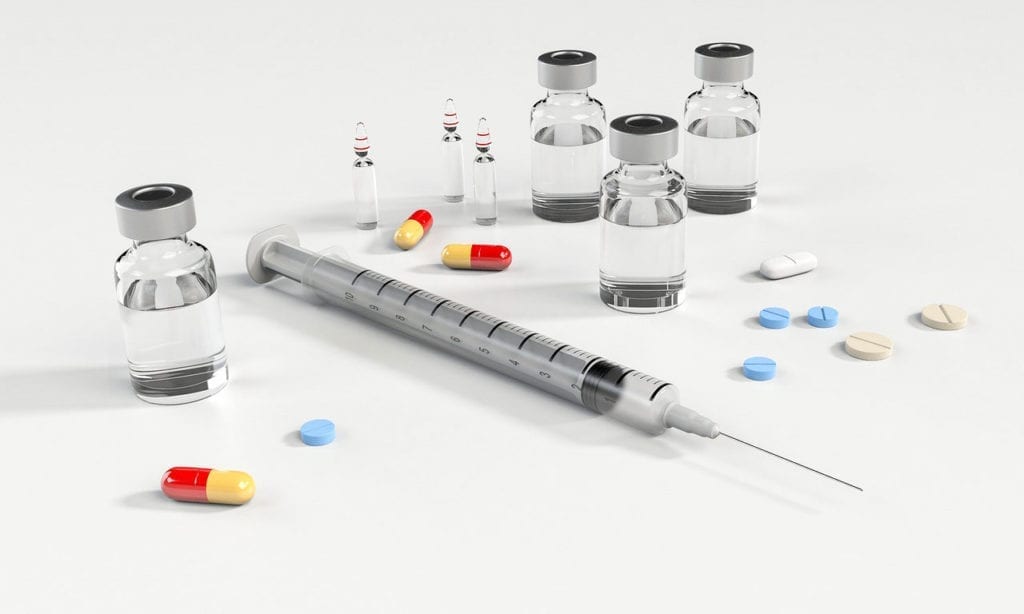Corticosteroids are used to treat a wide variety of inflammatory conditions, with asthma and arthritis acting as examples. However, these drugs can result in a variety of side effects, such as high blood pressure, an upset stomach, and weight gain, among others. Because of this, some doctors may try to limit or decrease the usage of corticosteroids. A recent study has shown that it may be possible to limit treatment with corticosteroids for eosinophilic granulomatosis with polyangiitis (EGPA), as Nucala was proven to increase remission rates while lowering disease activity when administered with corticosteroids. These drugs are currently the first-line treatment for EGPA, so Nucala offers a way to lower their use.
About the Study
Titled “Effectiveness and safety of mepolizumab in combination with corticosteroids in patients with eosinophilic granulomatosis with polyangiitis,” the study was published in Arthritis Research and Therapy. A team of researchers from the University of Occupational and Environmental Health in Japan wanted to evaluate the effectiveness of Nucala in a real-world, clinical setting, as it has already demonstrated positive results in a Phase 3, placebo-controlled trial.
To do so, they enrolled 16 patients with refractory or relapsed EGPA and administered 300 mg of Nucala every month for a year. They evaluated the effectiveness and safety of the treatment by assessing patients’ eosinophil cell count, disease activity, treatment retention rate, remission rate, adverse events, and changes in the dosages of corticosteroids (or immunosuppressants if applicable).
The researchers also had access to the participants’ medical information for the year leading up to the study, making comparison much easier. Before treatment with Nucala, eleven patients had refractory EGPA, four had relapsing, and a single patient was in remission. Afterward, these numbers changed to six and ten respectively, with no patients in remission. In addition, the researchers could see the remission rates of the patients before treatment, which were 12.5% after three months of corticosteroids, 6.3% after six months, and 0% after a year. In comparison, treatment with Nucala led to 12.5% remission in one month, 31.3% after three months, 50% after half of a year, and 75% after a full year. Additional results include:
- Disease activity decreased by 0.5 on the Birmingham vasculitis activity score after treatment with Nucala
- Improvement in respiratory, ear, throat, and nose symptoms
- Eosinophil cell count decreased by 146.2 cells per microliter
- Significant decreases in corticosteroid use, from a median of 2,665 mg to 1,655 mg annually
- No patients discontinued treatment with Nucala
In the end, this study demonstrated positive results, just like the previous clinical trials. Nucala is able to lower the use of corticosteroids in EGPA patients while providing more effective treatment and maintaining safety.
About EGPA
Formerly known as Churg-Strauss syndrome, eosinophilic granulomatosis with polyangiitis is a form of ANCA-associated vasculitis. This autoimmune disorder causes the blood vessels to become inflamed, therefore limiting the blood flow to and from the organs. The most commonly impacted organs are the skin, heart, GI tract, and nervous system. There are three phases when it comes to the symptoms of this disorder, and they do not impact every affected individual in the same order. They are the allergic phase, eosinophilic phase, and vasculitic phase. The allergic phase is characterized by hay fever, sinus issues, asthma, and allergic reactions. The eosinophilic phase occurs when there are heightened levels of eosinophils, a type of white blood cell. Finally, the vasculitic phase entails the extreme inflammation of blood vessels. Common symptoms of this condition include:
- Acute to chronic sinusitis
- Acute to chronic asthma
- Neuropathy
- Lesions or spots that appear on chest X-rays
- White blood cells outside of the blood vessels
Medical professionals are unsure as to why this disease happens, but they consider it an autoimmune condition. This means that the immune system mistakenly attacks the body instead of just foreign invaders. In terms of treatments, corticosteroids are the first-line treatment. Other options include immunosuppressant drugs, biologics, and immune globulin.
Find the source article here.







